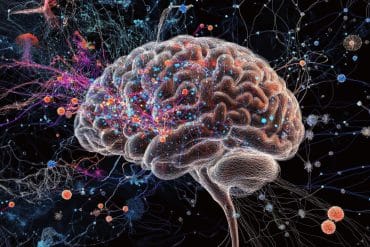Researchers at the Monell Center and collaborators have identified a protein that is critical to the ability of mammals to smell. Mice engineered to be lacking the Ggamma13 protein in their olfactory receptors were functionally anosmic – unable to smell. The findings may lend insight into the underlying causes of certain smell disorders in humans.
“Without Ggamma13, the mice cannot smell,” said senior author Liquan Huang, PhD, a molecular biologist at Monell. “This raises the possibility that mutations in the Ggamma13 gene may contribute to certain forms of human anosmia and that gene sequencing may be able to predict some instances of smell loss.”
Odor molecules entering the nose are sensed by a family of olfactory receptors. Inside the receptor cells, a complex cascade of molecular interactions converts information to ultimately generate an electrical signal. This signal, called an action potential, is what tells the brain that an odor has been detected.

To date, the identities of some of the intracellular molecules that convert odor information into an action potential remain a mystery. Suspecting that a protein called Ggamma13 might be involved, the research team engineered mice to be lacking this protein and then tested how the ‘knockout’ mice responded to odors.
Importantly, because the Ggamma13 protein plays critical roles in other parts of the body, the Ggamma13 ‘knockout’ was confined exclusively to smell receptor cells. This specificity allowed the researchers to characterize the effect of Ggamma13 deletion on the olfactory system without interference from changes in other tissues.
Both behavioral and physiological experiments revealed that the Ggamma13 knockout mice did not respond to odors. The findings were published in The Journal of Neuroscience.
In behavioral tests, control mice with an intact sense of smell were able to detect and retrieve a piece of buried food in less than 30 seconds. However, mice lacking Ggamma13 in their olfactory cells required more than 8 minutes to perform the same task. Both sets of mice were able to quickly locate the food when it was placed in plain sight.
A second set of experiments measured olfactory function on a physiological level. Using olfactory tissue from knockout and control mice, the researchers recorded electrical responses to 15 different odors. Responses from the Ggamma13 knockout mice were greatly reduced, suggesting that the olfactory receptors of these mice were unable to translate odor signals into an electrical response.
Together, the findings demonstrate that Ggamma13 is essential for mammals to smell odors and extend the current understanding of how olfactory receptor cells communicate information about odors to the brain. Future studies will seek to identify how Ggamma13 interacts with other molecules within the olfactory receptor.
“Loss of olfactory function can greatly reduce quality of life,” said Huang. “Our findings demonstrate the significant consequences when just one molecular component of this complex system does not function properly.”
Notes about this neurology and odor detection research
Also contributing to the research were lead author Feng Li, Samusudeen Ponissery-Saidu, Karen Yee, Hong Wang, Naoko Iguchi, and Johannes Reisert from Monell; Meng-Ling Chen and Genhua Zhang from the Changshu Institute of Technology in China; and Ping Jiang from the Wistar Institute. The research was supported by the National Institute on Deafness and Other Communication Disorders, part of the National Institutes of Health, under award numbers R01DC007487, R01DC009613, and DC010012, and core facility grant P30 DC011735. The content is solely the responsibility of the authors and does not necessarily represent the official views of the National Institutes of Health. Additional funding came from National Science Foundation Equipment Grant DBI-0216310 and National Natural Science Foundation of China Grant 31228008.
Contact: Leslie Stein – Monell Chemical Senses Center
Source: Monell Chemical Senses Center press release
Image Source: The image of a woman smelling a flower is available in the public domain.
Original Research: Abstract for “Heterotrimeric G Protein Subunit Gγ13 Is Critical to Olfaction” by Feng Li, Samsudeen Ponissery-Saidu, Karen K. Yee, Hong Wang, Meng-Ling Chen, Naoko Iguchi, Genhua Zhang, Ping Jiang, Johannes Reisert, and Liquan Huang in Journal of Neuroscience. Published online May 1 2013 doi: 10.1523/JNEUROSCI.5563-12.2013







